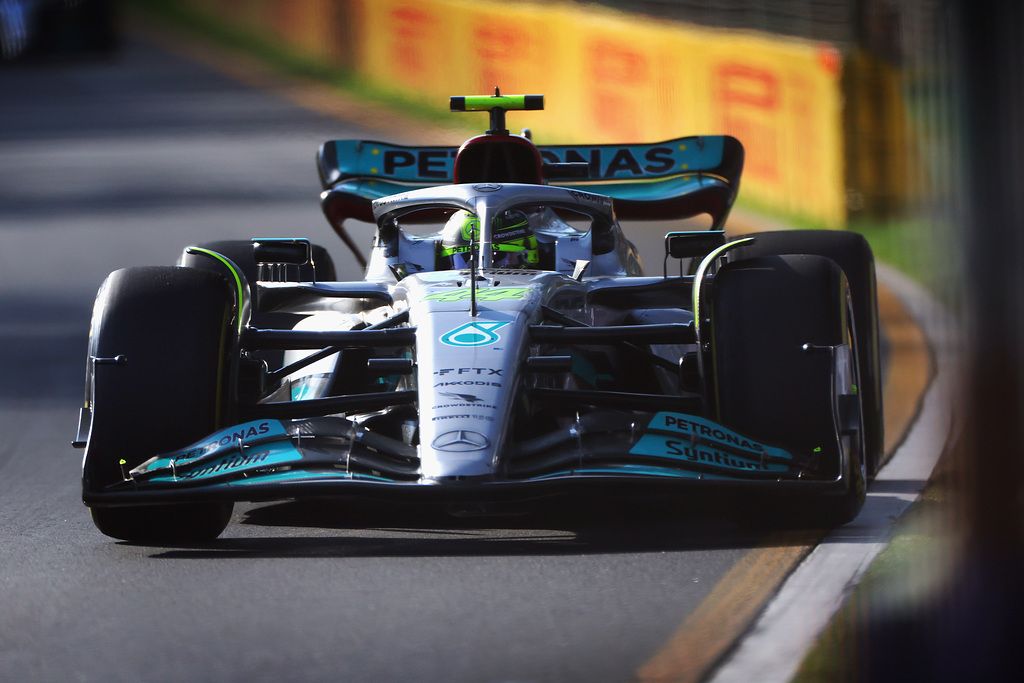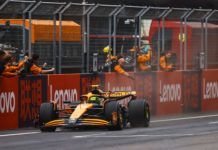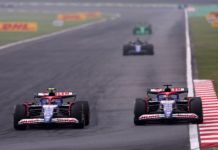Mercedes strategy director James Vowles elaborate on the whole ‘put me in difficult position’ message from Lewis Hamilton plus adds on sensors.
As Hamilton noted after the F1 Australian GP that his radio message during the grand prix was related to engine cooling and not about chase of George Russell, Mercedes strategy director Vowles has elaborated on the problem that the Brit was facing.
He notes that the warmer temperatures on Sunday when compared to Saturday, it affected not only Mercedes but the whole grid which is why they had to manage the situation. “That was all about engine cooling and keeping the PU cool during the course of the race,” said Vowles.
“We push everything to the limit, as you would imagine, and one of those is engine cooling, and you do that by closing up the bodywork or changing the louvre design at the back of the car. That decision is made on Saturday but obviously we are racing on Sunday, 24 hours later, and in this particular circumstance the ambient was one, maybe two degrees warmer than we had expected and as a result of that ourselves and not just ourselves, you would have heard it from teams up and down the grid were right on the limit of what the engine and the PU can take in terms of cooling requirements.
“And during the course of the race, when you are following a car it meant that Lewis had to compromise what he was doing, he had to move out of the dirty air of the car in front of him and make sure he got cool, clean air through the radiators to drop the PU temperatures down but doing that makes racing the car in front incredibly difficult and that’s why his message came out,” summed up the Mercedes chief.
The weekend had Hamilton running extra sensors on the car, which made his W13 a bit on the heavy side than George Russell’s. Mercedes put them to collect as much data to find a solution to their issues. “The answer is yes,” said Vowles when asked if they collected the data they required from the senors.
“We always need to have a good understanding and be data driven as an organisation. And it was painful, because taking sensors off the car because the car is too heavy means we are losing out on information and what we concluded from the first two races is we had too many questions without answers as a result of doing so.
“In a normal year, you wouldn’t even consider not having sensors on the car. You would add what you need to, to make sure you understand what’s going on. But obviously this isn’t a normal year and the car is overweight. In terms of how it worked between the two cars there are thousands of components that make up the racing car for George and for Lewis
“And those components don’t weigh exactly the same amount, there is variability of a few grams here and there and the actual car weight as mentioned on the FIA scales between the two cars in the race was within a few grams of each other, so Lewis did a fantastic job by carrying these extra sensors, ultimately the cost was small, it was a matter of grams between the two, which is what we wanted.
“To answer the bulk of the question though, have we got good data? Absolutely, it’s not that from this, you can suddenly find something you will turn everything on its head and will find a solution in one race but it provides clues and understanding of what we need to do to move forwards,” summed up Vowles.
Here’s Sergio Perez on his fight with Lewis Hamilton
Here’s Toto Wolff on Michael Masi
Here’s Lewis Hamilton on radio call



















